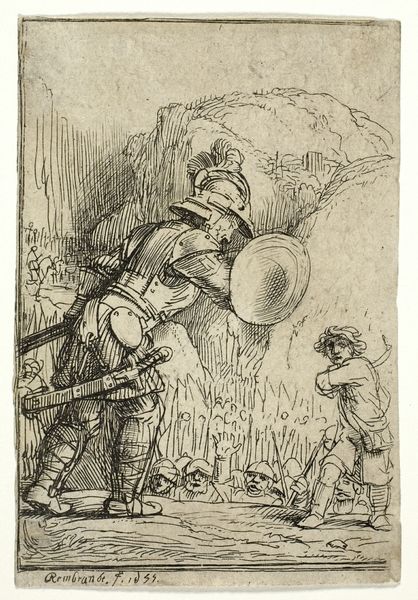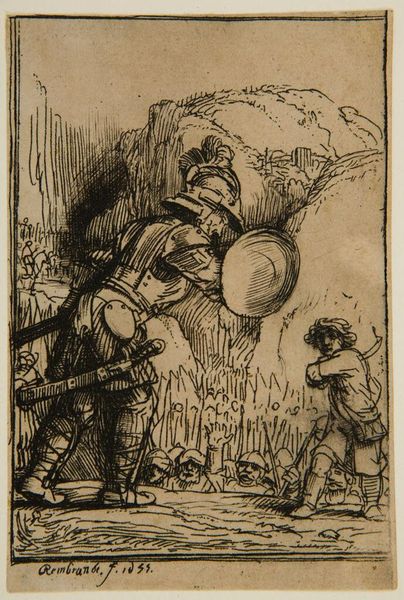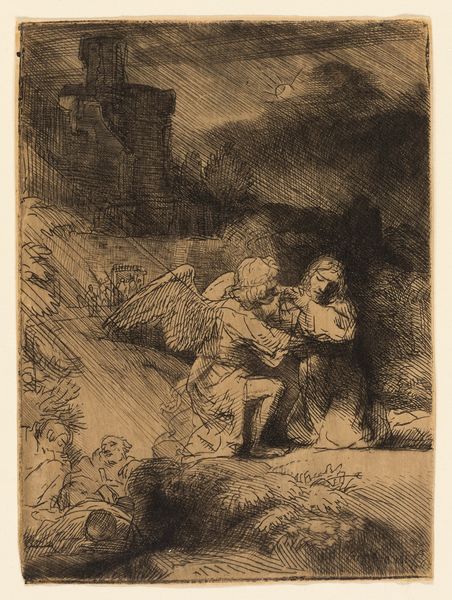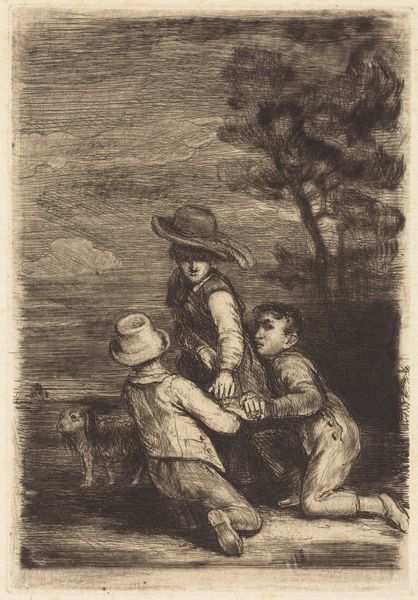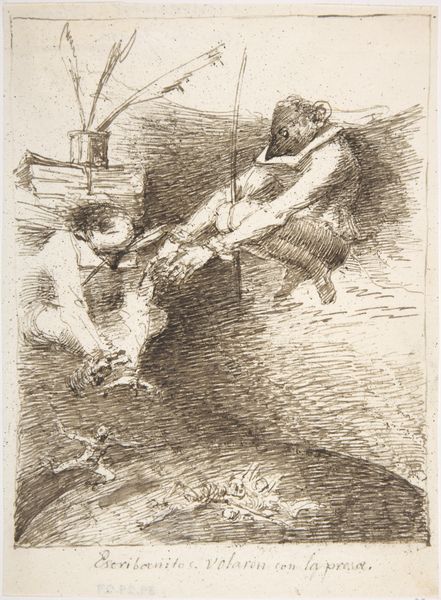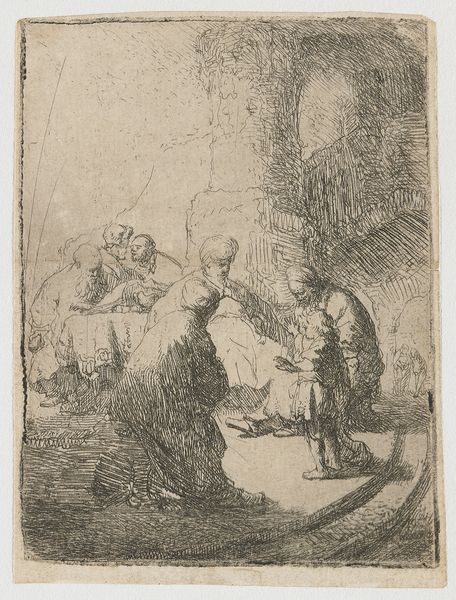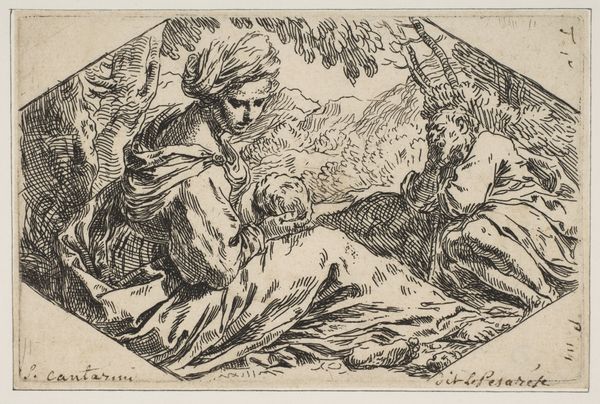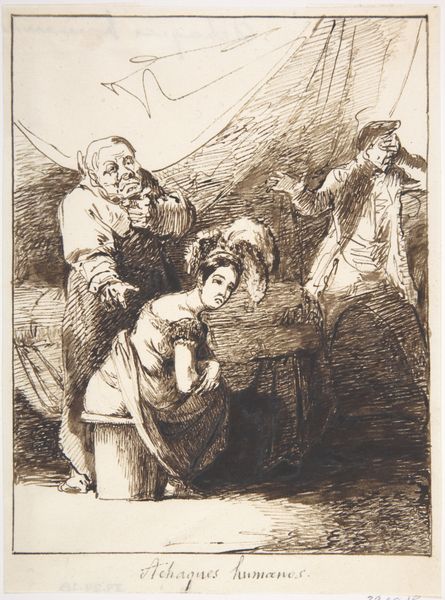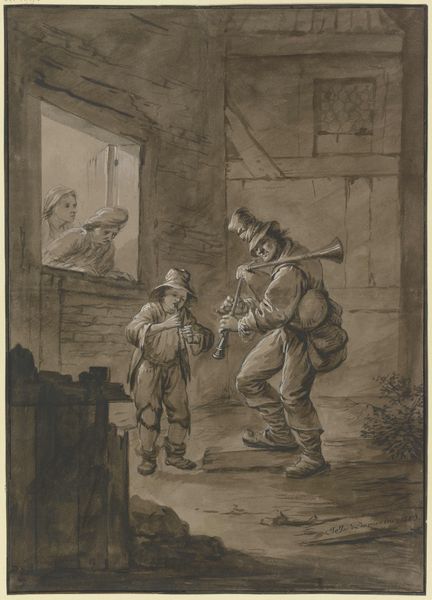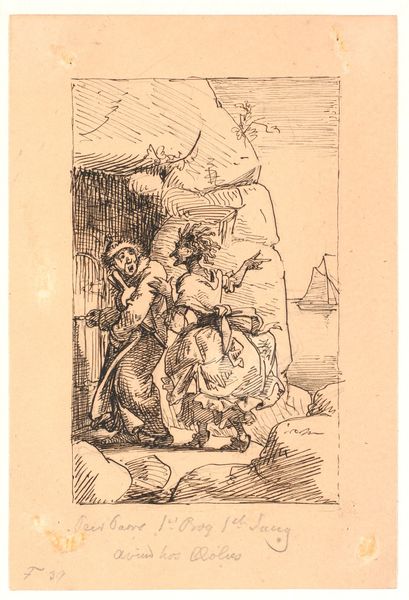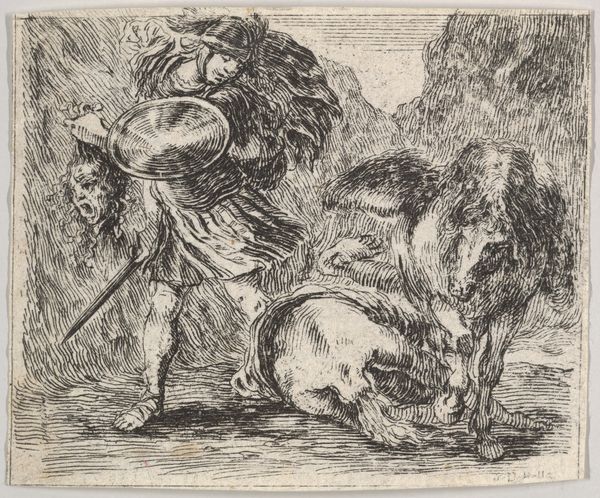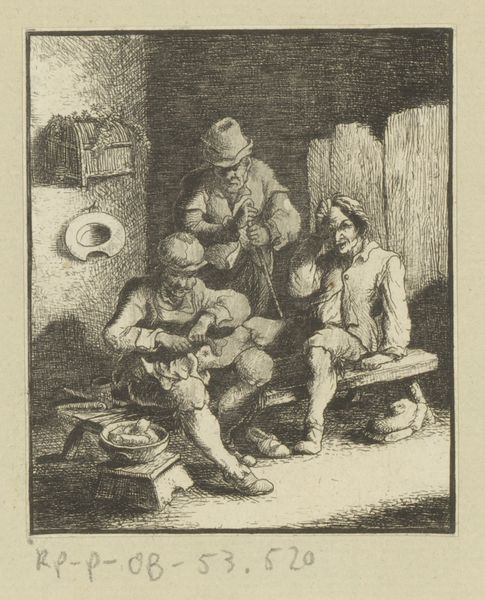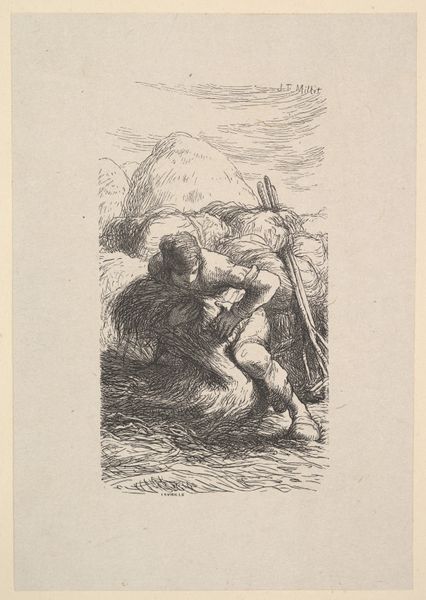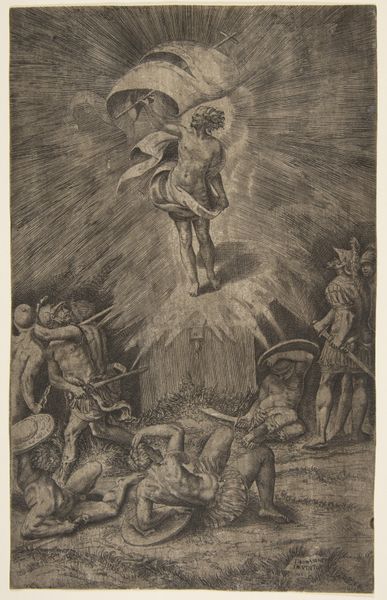
drawing, print, etching
#
drawing
#
weapon
#
narrative-art
#
baroque
# print
#
etching
#
figuration
#
history-painting
Dimensions: Sheet (Trimmed): 5 1/8 in. × 3 in. (13 × 7.6 cm)
Copyright: Public Domain
Curator: What a dynamic little etching. The use of line is so powerful here! Editor: Absolutely. We’re looking at Rembrandt van Rijn’s "David and Goliath," created around 1655. It resides here at the Met. Curator: Immediately, I’m struck by the way the artist uses scale to represent power, literally dwarfing David and emphasizing Goliath’s dominating, armor-clad form. What statements is Rembrandt making? Editor: It's more nuanced than a simple power dynamic, I think. It reflects the visual culture of the Dutch Golden Age, where biblical narratives were frequently reinterpreted to mirror contemporary socio-political anxieties and realities. Goliath’s armour hints at mercenary armies of the time, perceived as threats to civic order. Curator: Interesting, framing it within contemporary societal fears rather than straightforward heroism. How does that reading shift the understanding of David in the image? He’s smaller, but there’s a stance of resistance, agency in that defiance. Does this work subvert power structures? Editor: Perhaps, but not in isolation. The piece was created amidst discussions around Dutch independence. David can be interpreted as a symbol for a smaller entity’s ability to defeat the oppressor with shrewdness, determination, and possibly divine sanction. That's where its public role surfaces; influencing ideas. Curator: So, you see the art being politically involved in subtle ways, pushing a subversive agenda. And Rembrandt was often interested in social issues, how social classes and outcasts dealt with discrimination. Editor: Yes, absolutely. The positioning, even of Goliath as he represents the "Establishment", places all the parts within a historic context to communicate that change can happen from unexpected players or sources. Curator: Ultimately, it's this interplay of the personal and political, magnified through his unique, raw style, which I believe still speaks to the heart of what we value and what worries our culture today. Editor: I agree. Rembrandt masterfully transformed a religious anecdote into a piece with lasting societal meaning, still affecting audiences today.
Comments
No comments
Be the first to comment and join the conversation on the ultimate creative platform.
